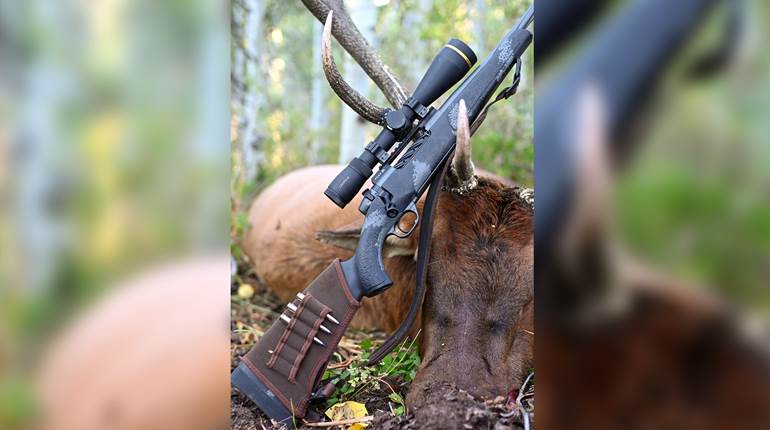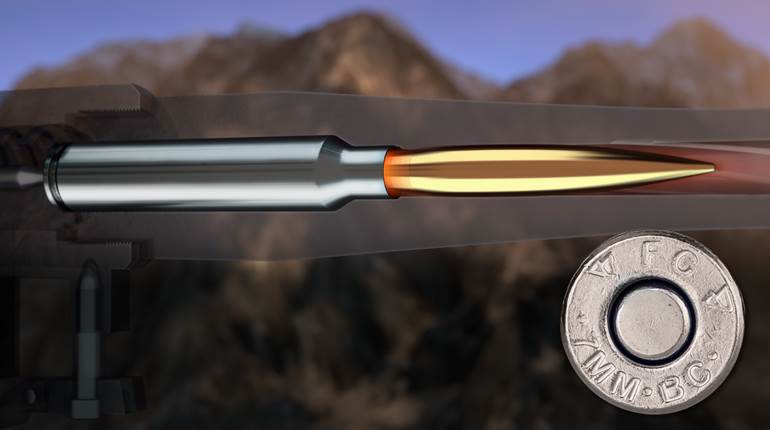
Specialized riflescopes are increasingly relied upon to perform tasks that go beyond simply providing the shooter a single aiming point zeroed to a particular distance. With its new M-223 series, Nikon has taken such specialization to a new level. Not only is the product line designed for specific pairing with rifles chambered in .223 Rem. or 5.56x45 mm NATO, it also offers distinct model variations for the different kinds of shooting applications for which such rifles are typically used. While the M-223 series includes the Laser IRT 2.5-10X 40 mm rangefinder-equipped riflescope and 1-4X 20 mm riflescope with Point Blank reticle, I chose to concentrate this evaluation on the more universally applicable 2-8X 32 mm and 3-12X 42 mm models.
All three conventional M-223 scopes feature 1-inch-diameter, one-piece main tubes and are nitrogen-filled and O-ring-sealed. Their lens elements are fully multi-coated, and I found them to deliver vivid, sharply focused images easily seen even in low-light conditions.
Purposefully Nikon developed these scopes to serve the growing legions of AR rifle owners, and because target-acquisition speed is a common priority with such shooters, the company employs three different reticle systems to cover the gamut of tactical, competition and hunting scenarios. All three have been calibrated to work with the same general (non-brand-specific) loading: a 55-grain polymer-tip bullet at a muzzle velocity of 3,240 fps. That designation is inscribed right on the scopes’ elevation turret caps. For the systems to work as intended, Nikon stipulates that the scopes must be set at their highest magnifications.
Two of the reticles address long-range shooting, but give riflemen different ways to engage targets at progressively longer ranges out to 600 yards. The BDC (Bullet-Drop Compensating) system can be found on many Nikon scopes, including its top-of-the-line Monarchs. It is worth mentioning here that in a side-by-side exercise, light transmission of the mid-priced M-223s compared favorably to that of the Monarchs.
The lower half of the BDC’s vertical crosshair presents a series of “ballistic circles” that can quickly be superimposed over a target and are especially effective on moving targets. Alternately, either of the two points where a circle intersects the post can be used for finer, more deliberate aiming. M-223 scopes offer the new BDC 600, which boasts five ballistic circles alternating with hashmarks between them. When paired with the 55-grain, polymer-tip .223 Rem. loading, it provides dead-on aiming points at 50-yard increments beginning at 100 yards with the central crosshairs and extending to 600 yards with the lowest circle. Both the 2-8X 32 mm and 3-12X 42 mm are offered with the BDC 600 with the latter having a side-focus knob for parallax correction.
Another long-range approach is taken by the NikoPlex, a conventional tapered-post crosshair controlled for elevation adjustment by Nikon’s Rapid Action Turret, a target-style adjustment knob marked in 100-yard increments from 100 to 600 yards. The shooter simply clicks to align the desired yardage indicator with a rear-facing witness mark, and the scope will provide a dead-on hold to that distance with the baseline 55-grain/3,240-fps loading. The entire range of adjustment requires less than one full rotation of the turret. This system is likewise offered in 2-8X 32 mm and 3-12X 42 mm models.
The third M-223 reticle option is meant for short- to medium-range tactical and competition shooting. Available in the 1-4X 20 mm model, the Point Blank Reticle offers a dual-thickness configuration wherein thick outer posts step down to fine crosshairs with a dot at the center. The aiming dot subtends three minutes of angle, making the system ideal, according to Nikon, for rapid engagement of the metal targets used in 3-gun competition. This scope is designed to deliver dead-on hits from zero to 200 yards.
Although it may sound as if owners are practically compelled to shoot nothing but the aforementioned loading, that’s only the case if one wants to rely on the reticle systems for dead-on holds on known-distance targets. I saw how that works—but also how versatile the M-223 line can be—while testing the 2-8X 32 mm NikoPlex on a Para USA TTR rifle and the 3-12X 42 mm BDC on an FNH SCAR 16S.
When I followed protocol and shot a Hornady TAP 55-grain polymer-tip load at the specified 3,240 fps, the results were telling. After zeroing both rigs at 100 yards, I proceeded to shoot 12-shot composite groups of three shots each at 100, 200, 300 and 400 yards, employing the two scopes’ alternate trajectory-compensation devices to allow dead-on holds. The FNH SCAR 16S/BDC 600 tandem produced a group that measured 6.6 inches and had vertical dispersion of 3.8 inches. The Para TTR/NikoPlex Rapid Action Turret setup fired a composite group measuring 4 inches but with a slightly greater vertical dispersion, also 4 inches. Clearly both reticle systems achieved the objective of facilitating dead-on-holds quite well.
I also observed what happens when an M-223 owner uses ammo other than the recommended loading by firing Hornady Superformance 53-grain V-Max started at the muzzle at 3,465 fps. Both rifles were zeroed at 100 yards but then at succeeding distances, their groups clustered almost two m.o.a. high. However, that doesn’t mean one must revert to old-school holdover aiming. Nikon has been an industry leader in creating its online Spot On Ballistics Match Technology mini-site where shooters can obtain instant data specific to their shooting equipment. Users simply enter their BDC-equipped Nikon model, load particulars and preferred zero range, and the program will show the precise range for the crosshairs and each ballistic circle.
While at the range I used a laptop to consult Spot On (Nikon also offers an iPhone app of it). After brief trial and error, I found that from a 230-yard zero, the SCAR/3-12X 42 mm BDC scope combo would produce dead-on hits at 100-yard intervals from each of the five ballistic circles, thereby providing positive aim points out to 700 yards. There are hundreds of .223 Rem. loads from 15 ammunition and bullet makers listed in the site’s pulldown displays, along with thousands of additional loads from calibers ranging from .22 Long Rifle to .577 Tyrannosaur, and users can also key in handload data. In addition, Spot On provides wind drift references, trajectory paths and ballistic tables, all easily printed from a computer.
Both of the tested reticle systems proved fast and easy to use, and can be counted on for reliable trajectory corrections. Because of the ballistic circles’ “see-through” effect, the BDC system does indeed promote rapid target acquisition. Dialing in the proper range setting with the NikoPlex’s Rapid Action Turret proved equally convenient and was both faster and more foolproof than counting clicks. When necessary to adjust point of impact, the 1/4-inch-at-100-yd click stops were nicely tactile without the least bit of a mushy feel.
Nikon’s M-223 series scopes provide good value and can definitely serve long-range AR shooters with ambitions to be fast and proficient in changing circumstances and at varying target distances.
Importer: Nikon Sport Optics; (800) 645-6687; www.nikonhunting.com
Models: M-223 2-8X 32 mm; M-223 3-12X 42 mm (tested); M-223 1-4X 20 mm
Magnification and Objective: 2-8X 32 mm (tested); 3-12X 42 mm (tested); 1-4X 20 mm
Finish: matte black
Field of View (ft. @ 100 yds.): 46.2-11.5 (2-8X 32 mm); 33.6-8.4 (3-12X 42 mm); 92.9-23.1 (1-4X 20 mm)
Eye Relief: 3.7"-4.1" depending on model
Click Value: 1/4 m.o.a.
Adjustment Range: (windage & elevation) 80 m.o.a. (2-8X 32 mm); 60 m.o.a. (3-12X 42 mm)
Reticle: BDC 600 (2-8X 32 mm and 3-12X 42 mm);Point Blank (1-4X 20 mm)
Length: 111⁄2" (2-8X 32 mm); 13" (3-12X 42 mm); 103⁄8" (1-4X 20 mm)
Weight: 15 ozs. (2-8X 32 mm); 20 ozs. (3-12X 42 mm); 14 ozs. (1-4X 20 mm)
Features: Rapid Action Turret Technology; zero-reset capability; side-mounted parallax adjustment (3-12X 42 mm)
Accessories: included anti-reflective device (2-8X 32 mm and 3-12X 42 mm)
Suggested List Price: $330-$350 (2-8X 32 mm); $430-$450 (3-12X 42 mm); $280 (1-4X 20 mm)






































